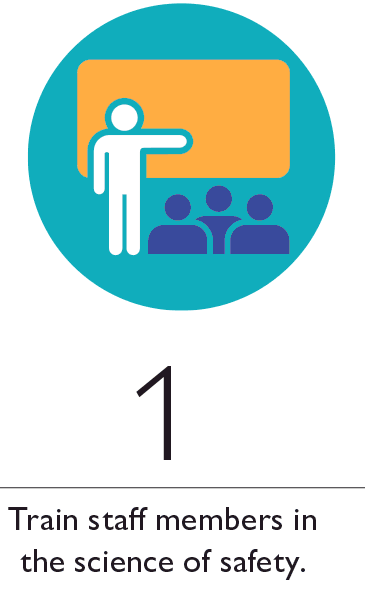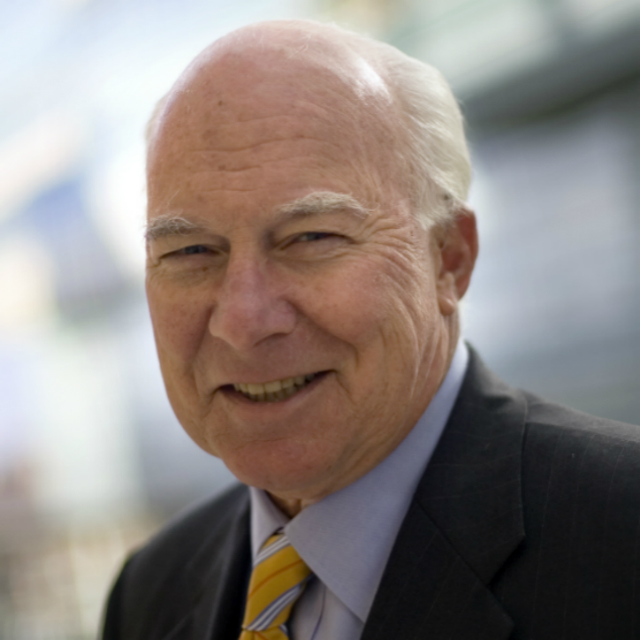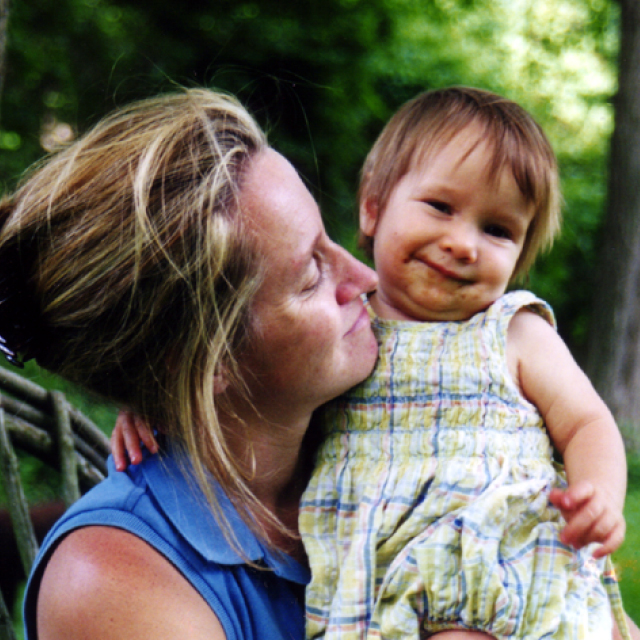On March 4, 2001, George Dover stood outside a Baltimore county home, rang the doorbell and changed the future of Johns Hopkins Medicine.
The director of the Johns Hopkins Children’s Center had come to the home of Tony and Sorrel King to apologize to the grieving parents.
Six weeks earlier, the Kings’ 18-month-old daughter Josie had wandered into an upstairs bathroom, turned on the hot water and climbed into the tub. By the time her screams brought her mother, Josie had second-degree burns on more than half of her body. The toddler was rushed by ambulance to The Johns Hopkins Hospital, where she received skin grafts and healed. Within weeks, she was acting like her old self. Then her condition deteriorated. Josie grew pale and unresponsive. She died Feb. 22 of what was ultimately identified as septic shock, just days before she was scheduled to return home.
The day Josie died, her Johns Hopkins-affiliated pediatrician, Lauren Bogue, walked into Dover’s office. She encouraged him to visit the King family and accept responsibility on behalf of Johns Hopkins. The unusual proposal quickly won full support from Johns Hopkins leadership—even its lawyers. Bogue arranged the meeting and accompanied Dover.
“I remember it was pouring rain and cold,” says Bogue. “Baltimore at its worst.” The pain inside the house was palpable, she recalls.
“The first thing I said to the Kings was that I was terribly sorry,” says Dover. “In those days, that was not fashionable. We told Tony and Sorrel we would find out exactly what had happened, we would communicate what we found and we would do our best to make sure it never happened again.”
Dover kept his word, telephoning Sorrel every Friday morning, even when there was little to report.
On June 2, a second tragedy occurred. Ellen Roche, a healthy 24-year-old, died of lung failure less than a month after inhaling an irritant medication while participating in an asthma research study.
Ten days after Roche’s death, the U.S. Office for Human Research Protections suspended all federally funded human subject research at Johns Hopkins, halting nearly 2,500 investigations for several months.
The two deaths shattered Johns Hopkins, propelling what some consider the most significant culture change in its history.
“These events created a moral moment where we had to make a choice,” says Peter Pronovost, director of the Armstrong Institute for Patient Safety and Quality. “It was: Are we going to openly address our shortcomings? Or are we going to hide behind our brand and say all is well? Leadership stood up and said, ‘We need to start talking about this.’”
In the 15 years since that fateful crossroads, as the health care system expands, Johns Hopkins Medicine has pioneered a culture of accountability and patient safety advances. By 2015, all six Johns Hopkins hospitals were recognized by the Joint Commission in its Top Performer on Key Quality Measures program. Johns Hopkins programs and safety metrics were adopted around the world.
But before that could happen, safety had to become the top priority.
Research oversight became more stringent; two Institutional Review Boards became seven.
“We have a whole process to identify a high-risk protocol like the one Ellen Roche was in,” says Dan Ford, vice dean for clinical investigation—a position created after Roche’s death. “We conduct research in the safest possible setting. Each research team has to know how it would handle an emergency.”
On the clinical side, opportunities for error continue to be systemically eradicated by changing procedures, equipment, even the culture within units. The Armstrong Institute, founded in 2011, leads this effort while training a new generation of patient safety innovators. Clinicians receive emotional support after adverse patient events. Family members are encouraged to assist with care and speak up if something doesn’t look right.
Making Safety the Top Priority
These changes might have saved the fathers of Ronald R. Peterson and Pronovost. Peterson, president of The Johns Hopkins Hospital and Health System and executive vice president of Johns Hopkins Medicine, lost his father to sepsis, a bacterial bloodstream infection acquired after surgery. Pronovost’s father died at age 50 after being diagnosed with leukemia instead of lymphoma.
But the pervasiveness of these deadly mistakes didn’t become clear until the 1999 release of “To Err is Human.” The headline-grabbing report from the Institute of Medicine asserted that as many as 98,000 people perished in American hospitals each year because of preventable errors. “The culture seemed to be—I hate to say it—that a certain amount of bad stuff happens in medicine,” says Peterson.
The deaths of King and Roche made patient safety personal—and urgent. “We took the position that the buck had to stop at the top of the organization,” says Peterson. “It was our responsibility to take definitive steps to address this.”
The effort began with three bold steps: Make safety the No. 1 priority of Johns Hopkins Medicine. Start every board of trustees meeting with a safety report instead of a financial review. And create a safety-focused Center for Innovation in Quality Patient Care, funded with $500,000 each from The Johns Hopkins Hospital, the Johns Hopkins University School of Medicine and The Johns Hopkins University.
Richard “Chip” Davis became the center’s executive director, and Pronovost, its medical director. “Improving patient safety wasn’t a choice at Johns Hopkins,” says Lori Paine, who filled the newly created role of patient safety coordinator and is now director of patient safety for The Johns Hopkins Hospital and Armstrong Institute. “It was an obligation.”
When Tony and Sorrel King received a settlement from Johns Hopkins, they created the Josie King Foundation and donated money to Johns Hopkins for patient safety programs. “She held us accountable,” Pronovost says of Sorrel King. “She didn’t want what happened to Josie to happen to anybody else.”
A Comprehensive Approach
Nearly 200 separate tasks are required to reduce preventable harm for a single intensive care patient, notes the Armstrong Institute. Johns Hopkins began treating safety like a science, collecting data to find, test and deploy systemic improvements.
An early target for this approach: bloodstream infections acquired through central-line catheters. In 2001, Pronovost and his infection control colleagues distilled 120 pages of information from the Centers for Disease Control and Prevention into a five-step checklist that was distributed to intensive care units.
Moveable carts were created with all the tubes, drapes and other equipment necessary for insertions. Doctors would no longer have to search for items in eight separate locations.
But the key step was empowering nurses to act if they saw doctors skipping items on the checklist. “People need to know that if someone they see above them is doing something that is dangerous to the patient, they have every right to speak up,” says Edward Miller, former CEO of Johns Hopkins Medicine and dean of the school of medicine.
It was a major culture shift, embraced by top leadership but resisted by some physicians.
“Some of the senior doctors said, ‘I’ll be darned if some nurse is going to tell me what to do,’” recalls William Brody, former president of The Johns Hopkins University. “One time I got a complaint from a doctor, and I said to the nurse, ‘Just put my name and phone number up on the nursing station. Call me, even if its 2 in the morning, and I’ll come in and have a conversation.’ I never had to.”
Compliance skyrocketed. Pronovost and his colleagues estimated that the checklist prevented 43 infections and eight intensive care unit (ICU) deaths over two years, saving the hospital $2 million in health care costs. The dramatic results were featured in a New Yorker article and helped Pronovost win a $500,000 “Genius Grant” from the MacArthur Foundation. More important, checklists became a standard, lifesaving component of health care nationwide.
The new culture of accountability led to the creation of the Comprehensive Unit-based Safety Program (CUSP), developed at Johns Hopkins more than 10 years ago. CUSP gives all caregivers tools and support to address problems such as hospital-acquired infections, medication administration errors or communication breakdowns.
More than 170 CUSP teams have been activated at Johns Hopkins Medicine, and hundreds more have been organized in hospitals internationally. The results are striking. With CUSP teams and checklists in 1,100 ICUs in 44 U.S. states, bloodstream infections are down by 40 percent in those hospitals, saving 500 lives and $34 million.
In another strategy to improve the safety of systems, The Johns Hopkins Hospital hired Peter Doyle in 2007 as its first human factors engineer. A goal of his profession, Doyle explains, is to optimize patient safety by studying how clinicians interact with medical devices in complex, interconnected and often hectic work environments. This includes working with nurses and clinical engineers to reduce unnecessary patient monitoring alarms, assisting in the selection of the safest pumps for infusing medications, and assuring that laboratory specimens are properly labeled for diagnostic accuracy.

CUSP
Today, there are more than 170 CUSP teams across the health system—and hundreds more outside of Johns Hopkins. Critical to the program are five steps:
The Armstrong Institute
Medical mistakes nearly killed C. Michael Armstrong. First, doctors at another hospital missed signs that he had leukemia. Then he developed a serious infection post-chemotherapy. After a tough battle in the ICU, he lived. Years later, he was belatedly diagnosed with advanced cancer and given a 50-50 chance of living five years. If he survived, he vowed, he would “do something big” for patient safety. Armstrong finished treatment in 2009. Two years later, he donated $10 million to Johns Hopkins to create the Armstrong Institute for Patient Safety and Quality.
The institute, headed by Pronovost, combines safety specialists from across Johns Hopkins, bringing “common purpose, programs, education, training, objective measurements and, probably more important than anything, accountability,” says Armstrong, former CEO and chairman of AT&T and Hughes Electronics and chairman of Johns Hopkins Medicine’s board of trustees from 2005 to 2013. For example, he says, prescription errors were dramatically cut by automating the multistep process with barcodes, scanners and confirmation checks.
The institute’s Patient Safety and Quality Leadership Academy, a nine-month multidisciplinary training program for future quality and safety leaders, has trained 60 employees so far, says Melinda Sawyer, assistant director of patient safety for the institute. Of those, she says, 94 percent now lead quality and safety projects at Johns Hopkins Medicine.
They are working to improve patient experiences, prevent harm during handoffs, minimize health care disparities between populations and decrease the number of missed diagnoses.
Active Patient Safety Projects
Johns Hopkins Medicine leads international safety projects to reduce preventable harm and improve patient and clinical outcomes.
Taking Care of Second Victims
When terrible things happen in hospitals, doctors, nurses and other members of the care team often suffer remorse and confusion. Sometimes the stress prevents them from doing their best work or prompts them to leave the profession.
Now, such “second victims” can find help in a program at The Johns Hopkins Hospital. Resilience in Stressful Events (RISE) uses trained peer responders to provide psychological first aid and emotional support whenever hospital staff members are traumatized by patient-related events.
Cheryl Connors, a patient safety specialist with the Armstrong Institute, teamed with Albert Wu, a Johns Hopkins professor of health policy and management, to create RISE in 2011. The program, supported in part by the Josie King Foundation, is based on Wu’s research on second victims, a term he coined in a British Medical Journal article in 2000. “RISE appeals to the best instincts of clinicians to support one another after adverse events,” he says.
RISE’s trained volunteers are available around the clock to speak confidentially with staff members, offering coping strategies and listening without judgment. The 30-member team at Johns Hopkins includes nurses, doctors, therapists, chaplains, pharmacists and others.
In the past four years, the team has received about 100 calls and met with close to 300 people, says Connors.
Family Involvement
Rhonda Wyskiel was a nurse at The Johns Hopkins Hospital when her 48-year-old mother was admitted, fighting for her life after surgery at another institution. Wyskiel tip-toed into the room where her mother was sleeping and whispered a request to her co-workers.
“I said, ‘I need to part her hair on the other side.’ They had it parted on the wrong side,” recalls Wyskiel. “I wanted to put ChapStick on. And the nurses told me not to touch her. I was only allowed in her room for 15 minutes at a time, and I couldn’t help.”
For Wyskiel, whose mother died at home a short while later, the experience was a turning point. She began involving family members in patient care, encouraging loved ones to ask questions, share observations and take on tasks, such as applying lotion and helping with feeding.
In 2010, Wyskiel formalized the approach with the Family Involvement Menu, a list of care activities for family members. The menu improves the hospital experience for patients and loved ones while enhancing patient safety, says Wyskiel. Family members know the patient’s medical history, can coax reluctant eaters to take one more bite and often are the first to recognize signs of distress, she says.
“I could give you 100 examples of times when family members have spoken up about a process or something we’re going to do to a patient where it could cause potential harm,” she says. “Family members are the real experts in the room.”
She now teaches other health care organizations how to involve families in care. “I would like to see the cultural shift occur where family members really are members of the health care team,” she says. “Families really want to be included.”
To make sure their voices are heard, the Children’s Center created the Pediatric Family Advisory Council. Started in 2007 as an eight-member steering committee, it has grown to a council of more than 50 parents and staff members. By 2013, similar Patient and Family Advisory Councils were active in every Johns Hopkins Medicine hospital, community physicians group and home care group.
Four years after her daughter’s death, Sorrel King asked Pronovost a question that haunts him to this day: “Would Josie be less likely to die now?” Pronovost and others at Johns Hopkins continue working to ensure that the answer is yes.


